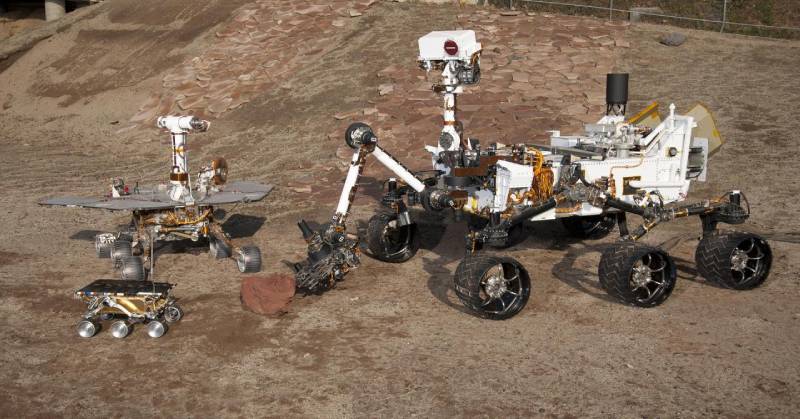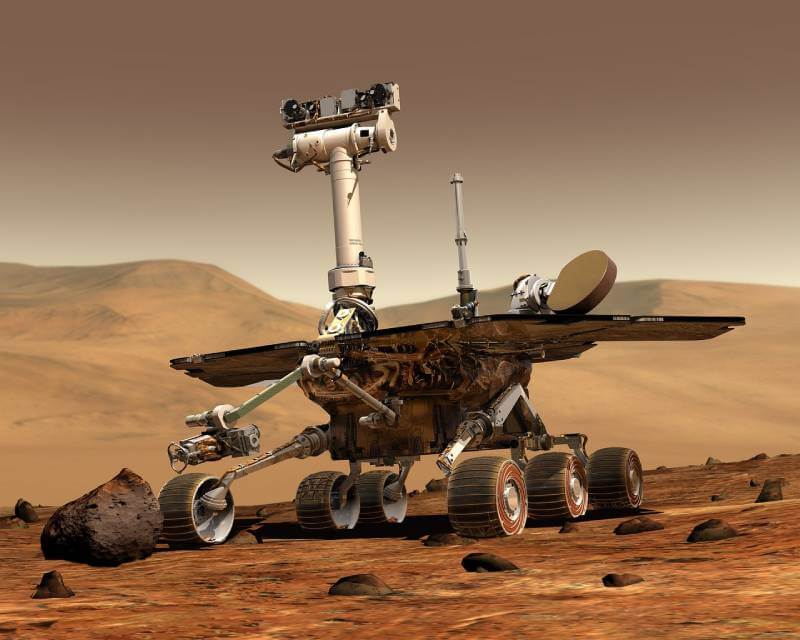Three rovers are operating on Mars as of August 2023 – Curiosity, Perseverance, and Zhurong. In total, 8 rovers have been launched to Mars, with 7 successfully landing. The rovers that landed on Mars are Mars 3, Sojourner, Spirit, and Opportunity. Mars 2 landing failed.
Mars’ history is closely parallel to Earth, making it a fascinating planet with a gravitational force adaptable for humans at 38% of Earth and a delicate yet protective atmosphere. Mars is covered in reddish dirt and freezing. Interestingly, it has flat areas, gullies, and volcanoes, similar to Earth. Some parts even look like rivers that were carved long ago. After Earth, Mars is the next best planet you can think of, suitable for humans to live in.
What Are The Mars Rovers?
Astronomers have been sending spaceships to Mars since the 1970s – some take pictures while flying around Mars, referred to as orbiters, and others land on Mars and send back information and pictures from the ground, known as landers. Mars rovers are little robots made to stay alive and drive on the surface of Mars.
All this is to analyze and pick up surface material to understand the past and assess the future possibility for habitability and life. With technological advancements, scientists are incorporating artificial intelligence in robots to sense obstacles and understand the terrain effectively since communication between Mars and Earth may take 4 to 20 minutes.
The Rovers and Landers Operating on Mars

Curiosity
Curiosity was an evolution of the success of Spirit and Opportunity. This rover was bigger and could reach four times the speed of other models. Launched on November 26, 2011, and Landing on Mars on August 6, 2012, the NASA rover was a game changer – with more tools to study radiation effects, atmosphere, and climate with advanced technology like spectrometers, drills for rock sampling, and cameras. This rover’s main mission was to understand Mars’s ability to host microbial life.
Perseverance
This is the latest rover to land on Mars’s surface. It carries more sophisticated instruments, but the design is similar to Curiosity. NASA’s Perseverance rover was launched on July 30, 2020, and reached the planet in February 2021. Building upon Curiosity’s legacy, this rover boasts improved technology with an included Mars helicopter called Ingenuity. The ‘marscopter’ is also being used to test powered flight on Mars. The major mission of the rover is to search for past life signs, collect and store soil and rock samples for future return missions, test oxygen production capability, and depict new technologies for exploration. There are yet to be substantial findings as this rover has been on a mission for a short period. However, it was expected to last for a year, but it’s still going and in perfect condition.
Zhurong
The Zhurong rover landed on the surface of Mars on May 22, 2021. It was part of China’s Tianwen-1 mission, which launched six different spacecraft, including a rover, lander, and orbiter. According to NASA, this was the first successful attempt for China to land a rover on Mars, making it the second nation. It is well-equipped to study Mars’ geological characteristics, magnetic field, and surface composition. Technically, the main mission is to assess the rock’s chemistry to study the red planet’s past atmospheric environment, topology, and geology.
What Does the Future Look Like?
Researchers have drawn insights into Mars’s habitability potential, climate history, and geology through these missions. In return, the missions have broadened our understanding of exactly what Mars would be like – from studying rock compositions to studying rock formations and analyzing Mars’ atmospheric conditions and seismic activity – we learn the potential of Mars to support life.
With technology evolution, the future exploration on Mars looks promising and even exciting – imagine everything there is to know! With NASA’s Artemis Program set to send astronauts back to the moon by 2024, it is a step closer to unlocking more sophisticated missions to allow scientists to study more material from Mars on Earth Laboratories.

